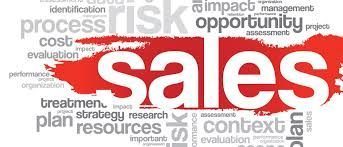
Below are some general historical statistics that have been reported in sales studies. These do, of course shift based on factors such as the industry you serve, product or service, geography, etc. How can you apply these to your practices?
- Average Lead Conversion: The average lead conversion rate across industries is typically between 2% to 3%.
- Speed of Contact: The odds of contacting a lead decrease by 100 times if the first contact attempt is made 30 minutes after the lead showed interest rather than within the first 5 minutes.
- Follow-Up Persistence: On average, it takes 8 cold call attempts to reach a prospect.
- Sales Closing Ratio: The average sales closing ratio is around 20%-30%.
- Best Days for Email: Tuesday is often the most effective day to send sales emails, followed by Monday and Wednesday.
- Use of CRM: High-performing sales teams utilize CRM tools 3 times more often than underperforming teams.
- B2B Sales Cycle Length: Almost 75% of B2B sales to new customers take at least 4 months to close, with almost half taking seven months or more.
- Use of Technology: Top salespeople use tools like CRM, social selling, data analysis, and email clients more frequently than their peers.
- Referral Lead Conversion: Referral leads convert 30% better than leads generated from other marketing channels.
- Lifetime Value of Referral Leads: Referral leads have a 16% higher lifetime value compared to non-referral leads.
- Cost of Customer Acquisition: Acquiring a new customer can cost five times more than retaining an existing customer.
- Follow-Up Calls: 80% of sales require 5 follow-up calls after the initial meeting.
- Giving Up Early: 44% of sales reps give up after one follow-up.
- Email Opening: The average open rate for sales emails is about 24%.
- In-person Meeting Conversion: According to Baylor University, only 1% of cold calls ultimately convert into appointments.
Again, the statistics for your particular circumstances may vary based on a number of criteria, but these statistics form a good generalization. Based on the above. It is clear that time matters, from how quickly leads are contacted to the persistence required in following up. While only 2-3% of leads convert on average, the chances are substantially improved with swift engagement and persistence, as it typically takes eight cold calls to reach a prospect, and 80% of sales need five follow-up calls post-meeting.
Equally important is the strategic use of technology; top performers use CRM tools three times more often, indicating a correlation between technology adoption and sales success. Sales emails have the best open rates on Tuesdays, indicating the importance of timing your communication. The sales cycle length in B2B sales often stretches over four months, requiring a sustained strategy and patience.
Lastly, let’s not overlook the power of referrals, which have a 30% better conversion rate and 16% higher lifetime value. These statistics serve as a reminder that mastering sales is an art form, requiring speed, persistence, technological adoption, strategic timing, patience, and the cultivation of customer relationships for referrals. In the evolving sales arena, it is the understanding and application of these insights that can set successful sales professionals apart.
***
Eric S. Degen, CPA Titan Accountancy, LLC
